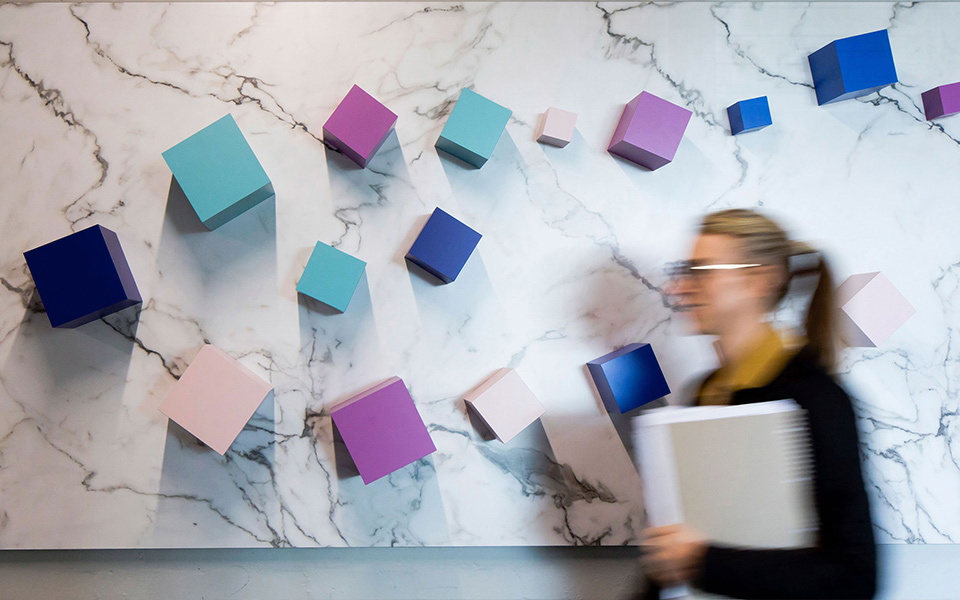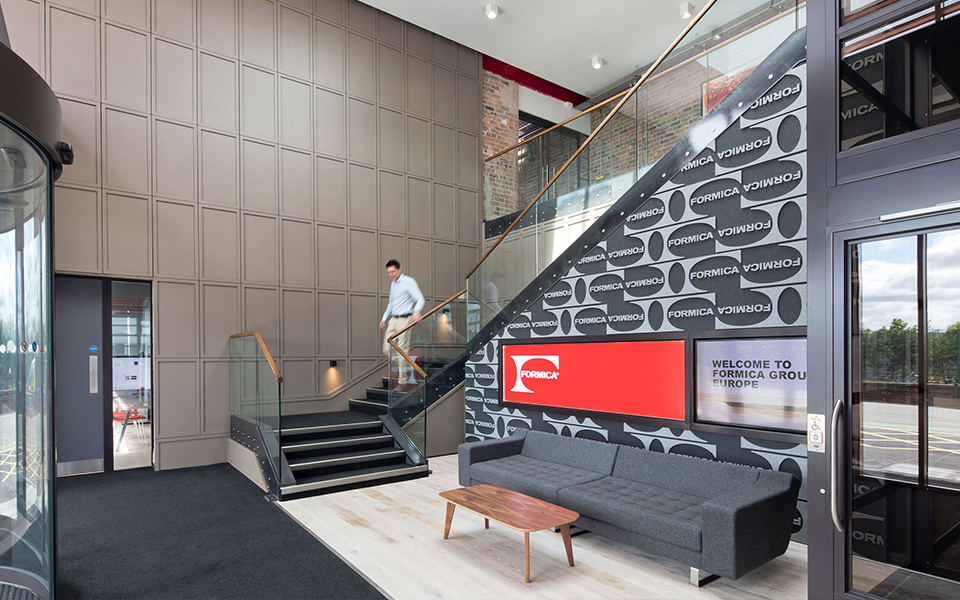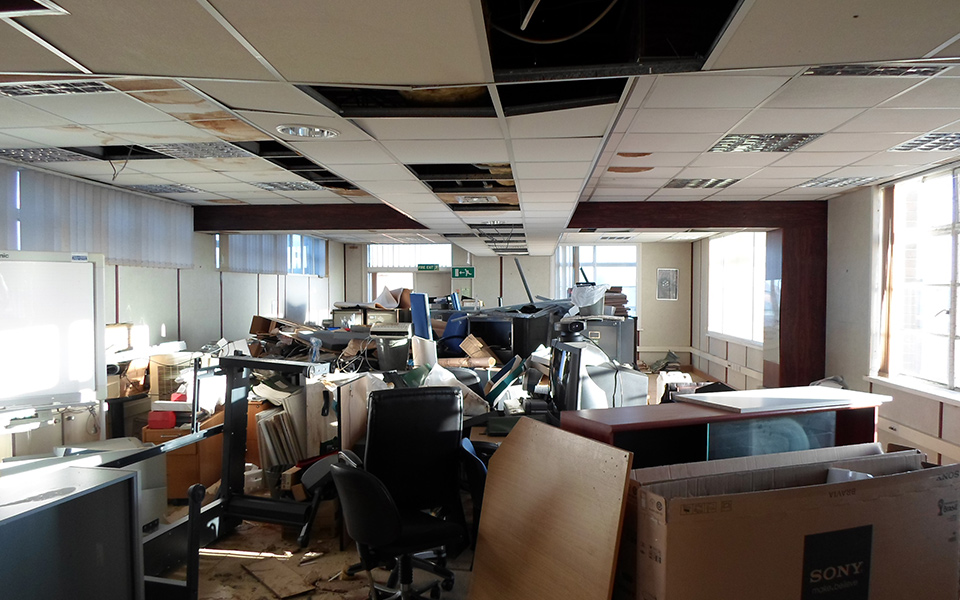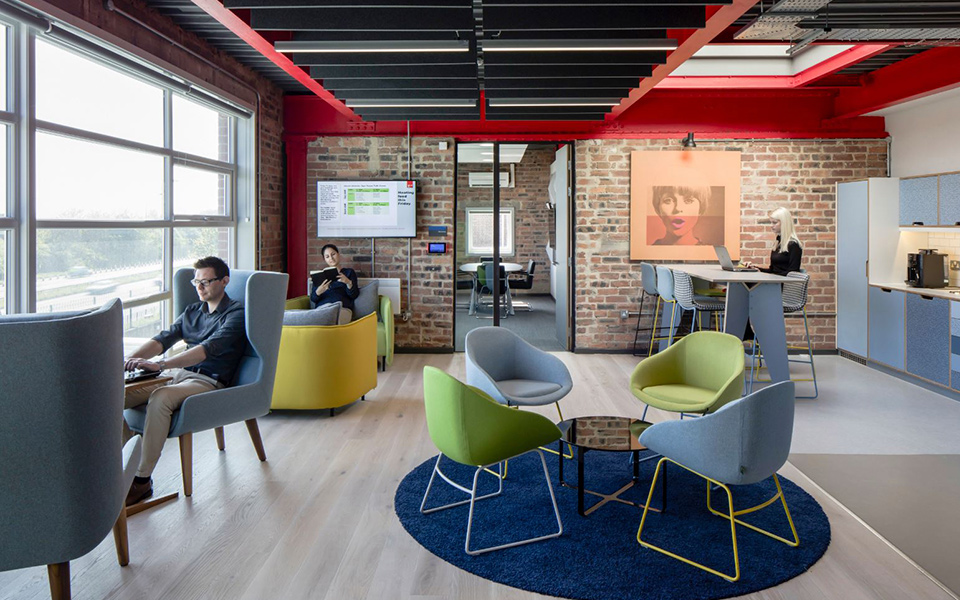The background to our business
 I set up Contents Design in 2012 and we were based in London for two years before I decided to move the business back up north to Newcastle.
I set up Contents Design in 2012 and we were based in London for two years before I decided to move the business back up north to Newcastle.
Our unique approach to interior design
We approach design in an holistic way and I believe this is our unique quality. We take secondary objectives and incorporate those into our primary objectives. I can give for an example a recent project we carried out for Formica, relocating their offices to their industrial base away from a business park. Their primary objective was to remove the “them and us” hierarchy that was growing up between the office site and the industrial site. Basically a divisive split was developing amongst the 200 staff. The directors at Formica decided, to counteract this division, that they wanted to move all of their staff back to their production base on an industrial site. It was a very old dilapidated building built in 1945 in an Art Deco style.
One of Formica’s secondary objectives was the demonstration of the product to visitors however we incorporated this into our scheme as a primary objective and used Formica as a material within the design for doors, furniture, fixed furniture and sculpture. We felt that rather than have the standard display of samples in the reception area that if we incorporated the material into the scheme we were truly enriching the brief and delivering a much more interesting design scheme.

Formica wall-sculptures at Formica’s European head office, North Shields, Tyne & Wear
Interior design by Contents Design
Our ideal interior design client
Our ideal client is one that trusts us and sees the value that design can bring to positively change a situation. Also, an ideal client is brave and commits to a design with conviction, without losing sight of the main objectives during the design journey. We are very lucky to have clients who think this way, and it makes the design process enjoyable for all involved. As our business grows, we are in a fortunate position where we can now select the clients we want to work with and we are being asked back to work with great clients. A common mistake that new businesses make is that they think they need to say yes to every job, they don’t, and they don’t have to put up with bad clients!
Interior design projects we don’t do
We do not carry out any design for domestic projects, only commercial ones.
One of our typical interior design projects
Formica, that I touched on earlier is a perfect example of the kind of work we like to do. To go into a little more detail, I confess it was a daunting project at the beginning as it was the largest project we had ever undertaken but we approached it in bite-size chunks and proceeded through the project that way. We were the lead designers and attending weekly site meetings with project managers from LWP, the work-load was all on us as there was no architect on the project.
It was quite a long process as it took, from the feasibility study to completion, took two years to complete. I am pleased to say that the client is now asking us back regarding two further projects.

Formica’s European head office, North Shields, Tyne & Wear
Interior design by Contents Design
Project Management by LWP
The capabilities of Contents Interior & Graphic Design Ltd.
We are very proud of our BIM capabilities and the development of CoBie and the fact that we offer these services to our clients as interior architects.
Common frustrations as a professional interior designer
Interestingly this has a geographical base to it. In London I found clients are much more trusting of interior designers to go and do their professional jobs and leave them to it.
In the North I find that clients are not so educated in how to be clients and, although happy to pay the design fees, they want to overly steer the design process themselves rather than leave it to us. I do feel that a process in which clients are “taught to be clients” would be a valuable process. This would include education in how to engage interior designers and also in projects’ terms of reference i.e. what language to use. For example one client of ours, a school, speaks in “education speak” the contractor in builder-speak, the financiers in financial terms and then we have design terminology too. A unification of language would be a great start for any design project at the pre-schematic stage. I feel that instruction in even in things like how to read plans would be incredibly valuable as some clients have never been shown a floor plan before or been shown how to interpret them.
Part of a community?
I do feel part of a community – not with other interior designers but with our suppliers and the people we work with. We have built up a great network of companies whom we trust to put forward to our clients and we feel a good connection with them. We have worked with them for so long and we know they have a good attitude on site and are very loyal.

Before the work began– the Formica European head office building built 1945, North Shields, Tyne & Wear

After completion– a light, contemporary and welcoming space at Formica’s European head office, North Shields, Tyne & Wear
Interior design by Contents Design
Project Management by LWP